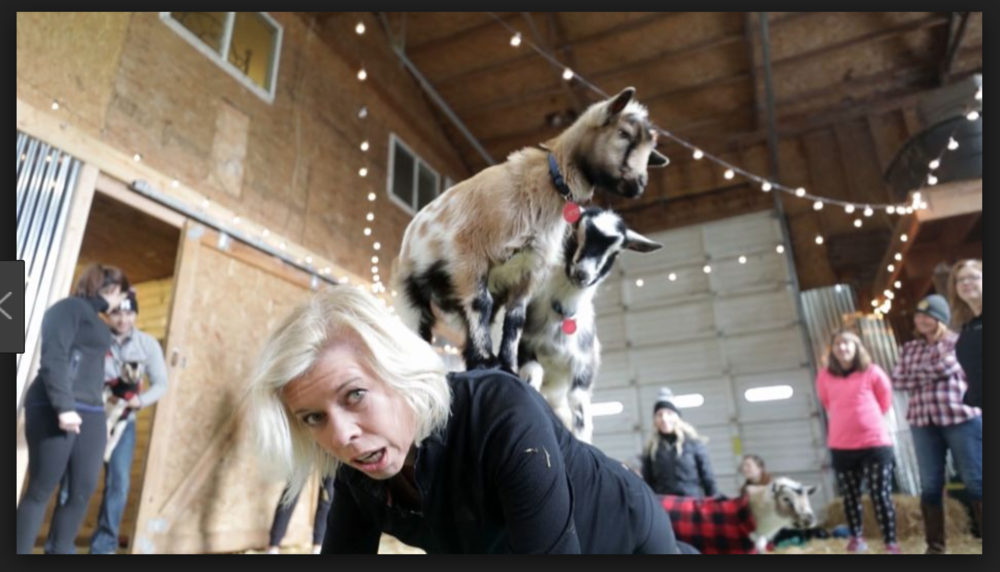What is Spineful Yoga and Why Do We Need It?

As a keen observer of the yoga scene, you may be wondering: What is Spineful Yoga? You might also ask: Does the world really need another yoga style? Wasn’t our desire for novelty satisfied once and for all by goat yoga?
Well, here we go.
Spineful yoga is yoga in alignment with gravity.
The story of Spineful yoga begins with Noelle Perez, one of BKS Iyengar’s first European students. Noelle began her search as a yoga student, looking for what Iyengar called “the axis,” as in the sentence: “None of your students are on the axis.”
As Noelle travelled and observed, she looked at traditional societies worldwide, at Western society before the first World War, and at babies until they reach the age of three.
Eventually, she discovered the most efficient alignment for human beings to transfer weight to the ground. Once almost universal, this posture is disappearing from the modern world. And yet this alignment helps us maintain straight, strong, healthy bodies into old age.
Doesn’t yoga already teach healthy posture?
“Yoga” is a large and diverse category, and some forms are more focused on alignment than others. That said, I know of no form of yoga that teaches the key insight of Spinefulness: the position of the pelvis in natural alignment.
More often, yoga teachers give cues that lead to the exact opposite of healthy alignment, such as “lift the front of your pelvis,” “tuck your buttocks” or “lift your front ribs.”
In Spineful yoga, sitting or standing, we allow the pelvis to roll forward, so the lowest vertebra in the spine, L5, rests on the sacrum. This centres the pelvis over the thigh bones. Without this alignment, the pelvis hangs behind the legs, putting stress on the spine and weakening the abdominal muscles.
To repeat, in cultures in which back pain is rare, and the majority of people remain straight and strong into old age, the pelvis is centred up and over the thigh bones. For the past 50 years, teachers including Noelle Perez and my own teacher, Jean Couch, have been reducing and often completely removing back pain, just by teaching people how to position their pelvis.
Once the pelvis is in place we can begin to work from the natural arch, a short, sharp indentation at the base of the spine. From that spot, the spine rises towards the skull with a shallow indentation, in a line that looks almost straight.
What does Spineful yoga look like on the mat?
From the outside, it strongly resembles the Iyengar yoga I’ve been teaching for the last 18 years, and especially the way I’ve been teaching since 2016. Here are the distinguishing features that make it Spineful yoga:
- There is less emphasis on stretching and more on placing the bones so muscles can release.
- The goal is always to find more friction-free movement, even in strenuous poses.
- When the lumbar curve is excessive, we create length by releasing the front ribs and lifting from the low back, not by tucking the buttocks.
- The front ribcage stays relaxed. No more puffing the chest, or rolling back the shoulders to lift the sternum.
- Awareness centres on hinging either from the hip creases, in forward bends, or from the natural arch in backbends.
If it were up to me, every yoga teacher would teach this alignment.
Why not? It works.
I’ve spent a lot of time watching students with tight hamstrings work faithfully with very little progress. Now I know that even a devoted practice couldn’t counteract the way their day-to-day posture tightened their muscles.
And my own rounded back only straightened when I learned how to stop creating the curve. (If you’d like more details, check out this piece on how two years of Spinefulness practice straightened my back after 29 years of yoga failed to do so.)
Spineful alignment also reduces the risk of injury.
One of the most common yoga injuries is a strained and painful S.I. joint.
When the pelvis rolls forward into alignment, the fit between the sacrum and the bones of the hip girdle is much closer. The pelvis is more stable and the pain disappears – an effect I’ve experienced for myself.
Furthermore, Spineful yoga emphasizes bending from the hip creases, in a forward bend, or the natural arch in a backbend. That keeps our bending out of areas that were never meant to hinge, such as the mid-back and the thoracic.
Besides, Spineful yoga is fun.
Seeking relaxation in all postures, including the ones you hold all day long, turns out to be deeply liberating.
If this interests you, please join me on Sunday, Feb 3, from 10 to 11:45 for for what I’m fairly confident is the first Spineful yoga class in Canada, and certainly the first in Vancouver.
It’s a three-week series, February 3, 10 and 17. There are four spaces left in the class. Send me an email if you’d like me to hold a space for you.
The price is $65 for the three February classes.
And if you’d like to take the workshop that changed my life back in 2016, check out the Spinefulness Foundations Weekend Intensive coming up mid-February.